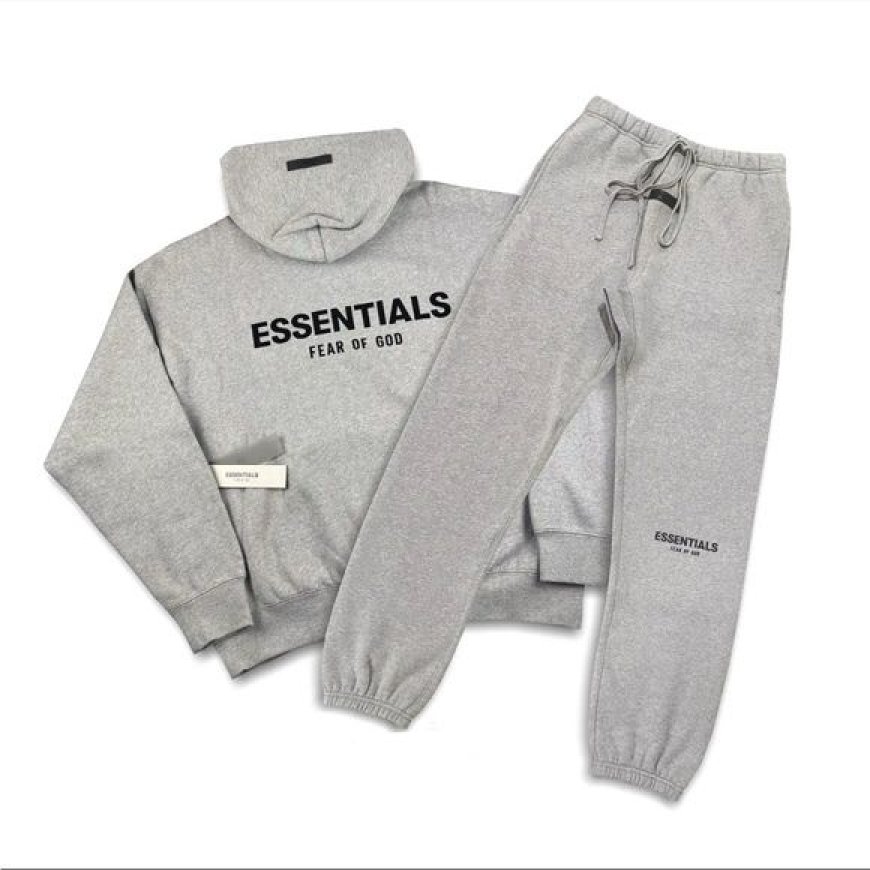Essential The Evolution of the Hoodie

From its humble beginnings as functional workwear to becoming a global symbol of comfort, rebellion, and style, the hoodie has traveled a long and fascinating journey. What was once a simple sweatshirt with a hood is now a fashion essential, worn by Essential Hoodie everyone from athletes and students to celebrities and CEOs. The evolution of the hoodie reflects broader shifts in culture, fashion, and identity—transforming it from a utilitarian garment into a timeless icon.
Origins: Utility Over Style
The hoodie’s story begins in the early 1930s in the United States. It was introduced by Champion, a sportswear brand, to serve a very practical purpose: keeping workers warm in freezing warehouses. The design was straightforward—heavy cotton fabric, long sleeves, a hood to protect against the cold, and a front pocket for added function. Its utility made it popular among laborers, athletes, and eventually the military, especially during training or outdoor activities.
Throughout the 20th century, the hoodie remained relatively under the radar in the fashion world. It was seen as sportswear or workwear, valued for its warmth and convenience rather than its aesthetics.
Adopted by Subcultures
The hoodie’s transformation from function to fashion began in the 1970s and 1980s, when it was adopted by emerging youth subcultures. Hip-hop artists in New York City wore hoodies as part of their streetwear identity, combining them with sneakers, gold chains, and baseball caps. At the same time, skaters and punk rockers embraced the hoodie for its ruggedness and countercultural edge.
It also became popular among graffiti artists, who appreciated the anonymity provided by the hood. Over time, the hoodie began to symbolize resistance, rebellion, and nonconformity. It was no longer just for warmth—it was a statement.
This cultural shift helped the hoodie cross into the mainstream, particularly among younger generations. By the late 1990s and early 2000s, it was everywhere: in music videos, on college campuses, and even on high-fashion runways.
From Streetwear to High Fashion
The early 2000s marked a turning point for the hoodie’s place in fashion. Designers like Ralph Lauren, Tommy Hilfiger, and Calvin Klein began incorporating hoodies into their collections, elevating the garment from streetwear to style staple.
But it was the rise of luxury streetwear in the 2010s that truly redefined the hoodie’s image. Brands like Supreme, Off-White, Yeezy, and Fear of God made the hoodie a centerpiece of their collections. With minimalist branding, premium materials, and thoughtful design, these hoodies were no longer just casual wear—they were collector’s items.
Fear of God’s Essentials line, for instance, became a cultural phenomenon, producing “essential” hoodies that embodied the intersection of comfort and elevated style. Their neutral color palettes, clean lines, and accessible price points appealed to a wide demographic, making the hoodie as much a fashion statement as it was a practical garment.
Symbol of Comfort and Identity
In recent years, especially in the wake of the COVID-19 pandemic, the hoodie has cemented its role as the go-to piece for comfort. As remote work and flexible lifestyles became the norm, people leaned into clothing that made them feel good without compromising on style.
The Essential Hoodie became the perfect solution—soft, functional, and easy to wear, yet polished enough to look intentional. It blurred the lines between loungewear and streetwear, creating a new category: elevated basics.
But the hoodie is more than just cozy apparel. It continues to serve as a medium of self-expression. Whether it’s emblazoned with a brand logo, a political message, or worn plain and minimal, the hoodie communicates something about its wearer—casual confidence, creativity, edge, or even activism.
The Hoodie Today: A Wardrobe Essential
Today, the hoodie is universally worn, regardless of age, gender, or background. You’ll see it in classrooms, airports, boardrooms (especially in Silicon Valley), and fashion weeks. It can be oversized or slim-fit, monochrome or graphic, luxury or thrifted—and still be relevant.
The Essential Hoodie, in particular, epitomizes the modern desire for clothing that is versatile, comfortable, and effortlessly stylish. It has become the foundation of the everyday wardrobe, capable of being dressed up or down, layered or worn solo, at home or out on the town.
Conclusion
The evolution of the hoodie is a testament Essentials Tracksuit to fashion’s ability to adapt, respond, and reflect culture. What started as a utilitarian piece of outerwear has transformed into a global symbol of style and identity. From its functional roots to its place in high fashion, the hoodie’s journey mirrors shifts in how we live, dress, and express ourselves.
Whether you’re drawn to its comfort, its history, or its style, one thing is clear: the Essential Hoodie is here to stay. It’s not just a trend—it’s a cultural mainstay.








































































![https //g.co/recover for help [1-866-719-1006]](https://newsquo.com/uploads/images/202506/image_430x256_684949454da3e.jpg)

























![[PATREON EXCLUSIVE] The Power of No: How to Say It, Mean It, and Lead with It](https://tpgblog.com/wp-content/uploads/2025/06/just-say-no.jpg?#)





















































